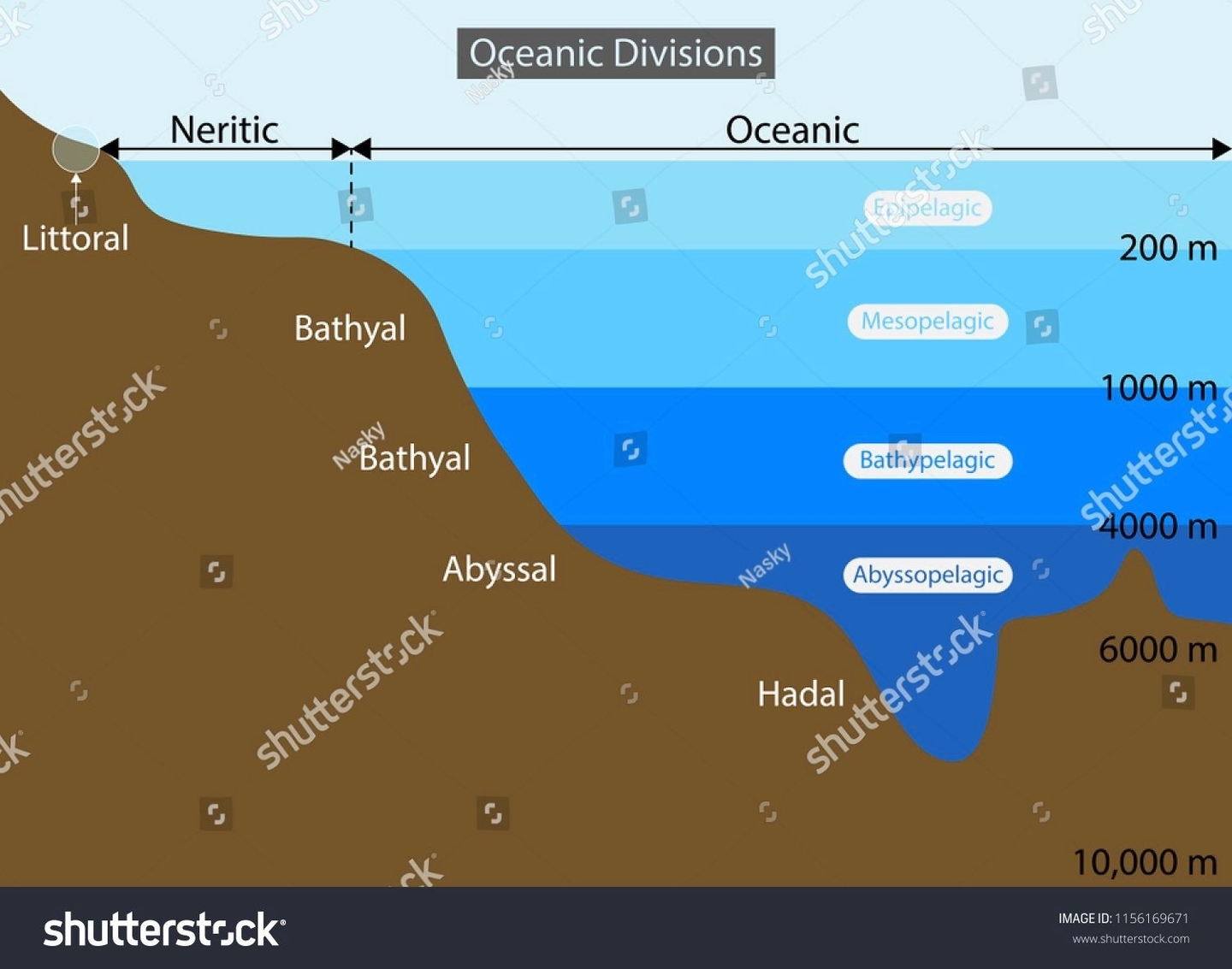
The ocean is a vast body of water that covers more than 70% of the Earth’s surface. It is divided into several layers based on the depth and temperature of the water. The topmost layer is called the epipelagic zone or the sunlight zone. It extends from the surface to a depth of 200 meters (660 feet) . This layer is characterized by abundant sunlight, which supports photosynthesis and the growth of phytoplankton. The temperature in this zone varies widely, ranging from 28°F (-2°C) near the North Pole to as high as 97°F (36°C) in the Persian Gulf . The next layer is the mesopelagic zone, also known as the twilight zone. It extends from 200 meters (660 feet) to 1,000 meters (3,300 feet) . This layer is characterized by a rapid decrease in temperature with increasing depth, forming a transition layer between the mixed layer at the surface and deeper water. The thermocline, a region where water temperature decreases rapidly with increasing depth, is located in this zone . The mesopelagic zone is also known for its bioluminescent organisms, which produce light to attract prey or communicate with each other in the dark environment .
The bathypelagic zone is the layer below the mesopelagic zone and extends from 1,000 meters (3,300 feet) to 4,000 meters (13,100 feet) . This layer is characterized by a constant temperature of 39°F (4°C) and complete darkness, except for the bioluminescence of the animals themselves . The pressure in this zone is extreme, reaching over 5850 pounds per square inch at depths of 4,000 meters (13,100 feet) . Despite the harsh conditions, some animals, such as sperm whales, can dive down to this level in search of food.
The abyssopelagic zone or the abyssal zone is the layer below the bathypelagic zone and extends from 4,000 meters (13,100 feet) to 6,000 meters (19,700 feet) . It is the pitch-black bottom layer of the ocean, where the water temperature is constantly near freezing . Only a few creatures can be found at these crushing depths, and the area of the deep-ocean floor lying in this zone accounts for three-quarters of the total area .
The deepest zone of the ocean is the hadalpelagic zone, which extends from 6,000 meters (19,700 feet) to the very bottom of the ocean . The deepest part of the ocean is the Mariana Trench off the coast of Japan, which has a depth of 10,994 meters (36,070 feet) . The temperature in this zone is just above freezing, and the pressure is immense, reaching over 15,000 pounds per square inch . Only a few organisms, such as amphipods and bacteria, can survive in this zone .
In summary, the ocean is divided into several layers based on the depth and temperature of the water. The topmost layer is the epipelagic zone, followed by the mesopelagic zone, the bathypelagic zone, the abyssopelagic zone, and the hadalpelagic zone. Each layer has unique characteristics and supports different types of organisms. The ocean is a fascinating and mysterious place, and there is still much to learn about its many layers and inhabitants.
: [National
